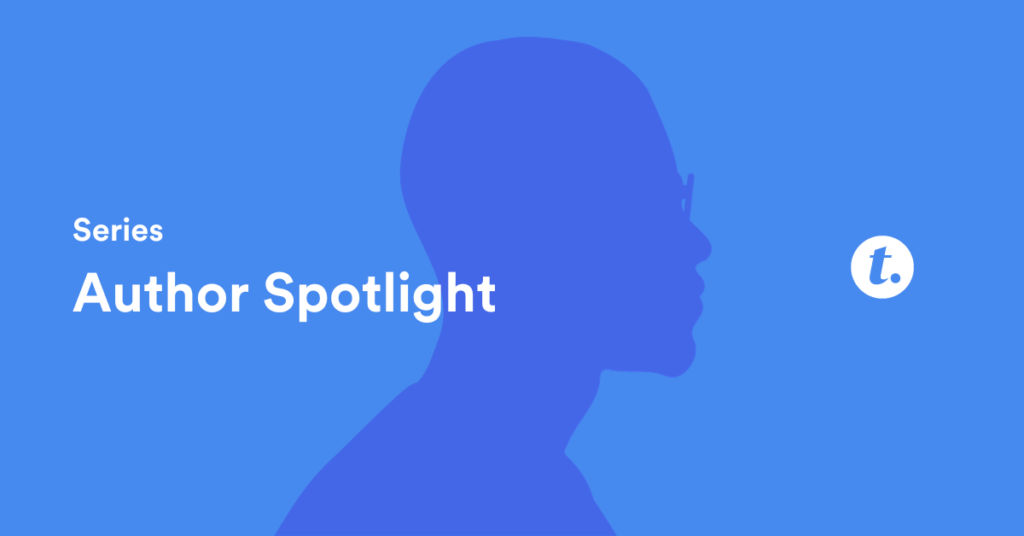
Welcome to Transform’s Q&A Author Spotlight Series, where we feature insightful authors who are redefining people and culture, work, leadership, and technology. Join us to gain fresh perspectives and practical knowledge from those at the forefront of today’s evolving professional landscape.
About the Author
With degrees in aerospace engineering and neuroscience, Paolo Gaudiano jokes that he’d already done rocket science and brain surgery before facing a really complex problem: convincing business leaders they can make more money by creating more inclusive organizations.
Paolo is the founder of DEI tech company Aleria and the research nonprofit ARC. A former tenured professor, Paolo is an adjunct at NYU and chair of the annual D&I Research Conference.
Paolo is a sought-after speaker, author of Measuring Inclusion: Higher Profits and Happier People, and a Forbes contributor. He has received numerous awards for his work, including a Moonshot House Fellowship from the Kravis Center for Social Impact.
To learn more about Paolo’s book, Measuring Inclusion: Higher Profits and Happier People, join the free Book Launch Festival on 9/23/24.
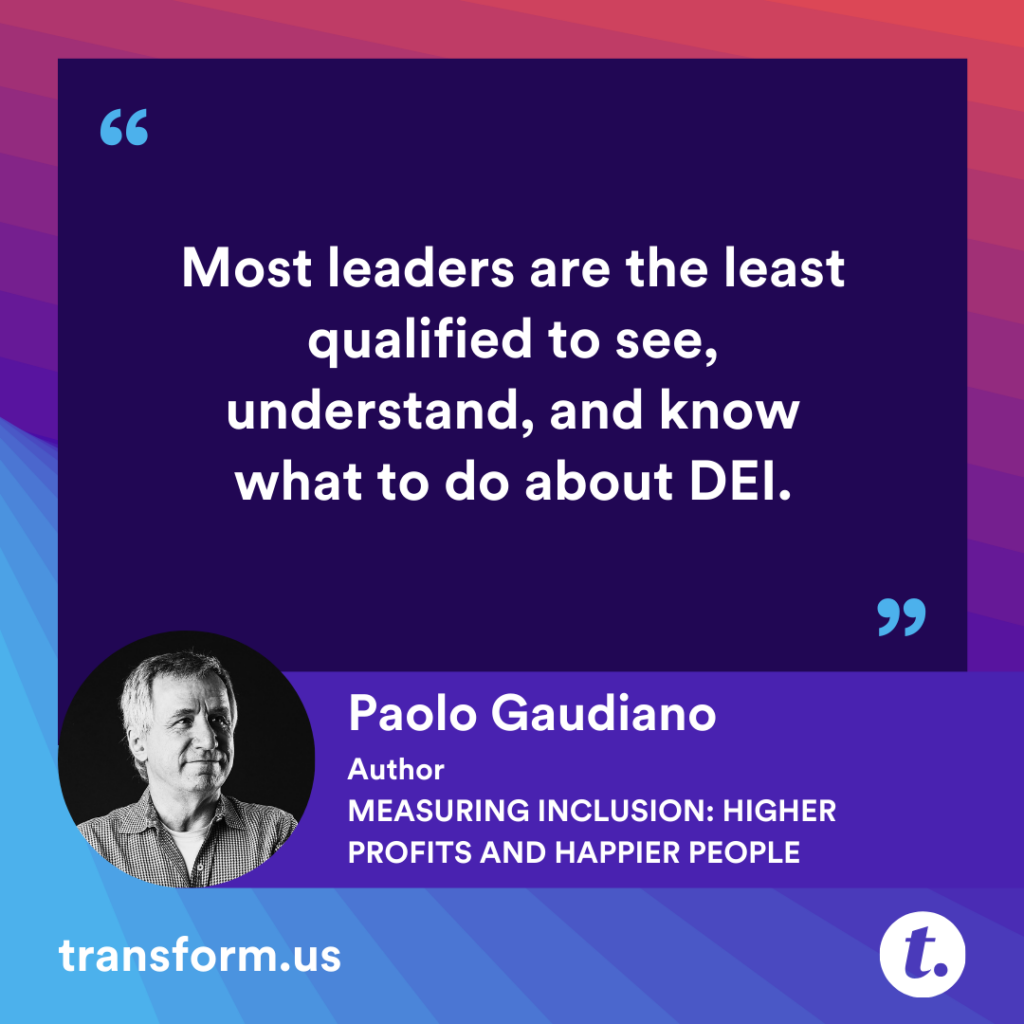
Background and Inspiration
Transform: What inspired you to write about Culture, HR, and DEI and what keeps you motivated in this field?
Paolo Gaudiano: I have the fortune of working in a field where every day I feel that I have the opportunity to make a difference. I am also a life-long teacher, and have always enjoyed finding ways to explain complex ideas in simple terms. Public speaking is great to generate enthusiasm, but writing is the best way to take ideas and turn them into something tangible and lasting.
Transform: Can you share a pivotal moment or experience that led to your interest in DEI?
Paolo Gaudiano: I had been personally interested in DEI for decades, since I first came to the US from my native Italy as a teenager. But I always felt that as a white man my only choices were to become an activist or do nothing. One day I was sitting in session on DEI at a large conference. I was struck by the huge gap between the detailed, poignant experiences shared by members of underappreciated groups, and the vague, general ideas for solutions: “We need to dismantle systems of oppression!” “We need to change the hearts and minds of corporate leaders!” and so on. As I puzzled over how to close that gap, I realized that my entire academic and professional life I had been doing exactly that: using a unique type of analytics that can clarify and quantify the link between individual behaviors and experiences, and the resulting impact on the “collective” in which they belong (e.g., consumer in a marketplace, drivers on a highway, employees in a company). I literally dropped everything I was doing and spent a year doing research. Once I realized I was onto something amazing, I started Aleria, ARC, and a small academic research center.
Transform: How have your professional experiences influenced your writing and perspectives on workplace trends?
Paolo Gaudiano: My career path has always been non-linear and multidisciplinary (a euphemism for “unfocused” 😅): three degrees in different fields, multiple careers (academic, consultant, entrepreneur), many jobs from car mechanic to interpreter for sports teams. But when I started my DEI work I felt I had finally figured out what I want to do when I grow up! I am able to bring all of these perspectives into play. My scientific and research background to gain a deep understanding of complex ideas; my consulting experience to understand how to use the ideas to solve real-world problems; my entrepreneurial experience to turn these ideas into a business; and my teaching experience to help explain it all in simple terms and spread the word through writing and public speaking.
Writing Process
Transform: What does your typical writing day look like when working on topics related to HR and business?
Paolo Gaudiano: My days tend to be a bit chaotic and unpredictable, especially in the last year or so (because of a strange convergence of circumstances). I particularly like carving out time late in the evening for writing. I am fortunate that I can write quickly.
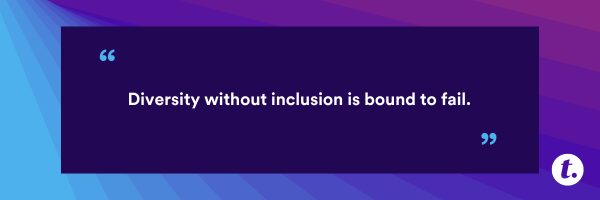
Transform: How do you stay current with the rapidly changing trends in the workplace to ensure your writing remains relevant?
Paolo Gaudiano: My primary source comes from newsletters—I subscribe to a lot of them. I like to go through as many as I can every morning, and then often check my favorite ones as they trickle in during the day. Part of what helps is that my company publishes a biweekly newsletter, and I am closely involved with the curation and writing, so it forces me to stay on top of news and trends even when I am very busy.
Transform: Do you prefer to outline your ideas in detail before writing, or do you allow the narrative to develop organically?
Paolo Gaudiano: I have a weird relationship with writing. In most cases I feel an idea starting to scratch the inside of my brain. I let it sit there for a while, and if it doesn’t go away, pretty soon I find myself turning it around in my head, looking at it from different angles, and thinking of how it could be turned into an interesting piece of writing. At some point when I feel clarity, I just dump the idea out. Typically I write out an entire draft in one go. Then I start revising it for flow and to make sure the message is clear and coherent. Then I usually like to let it sit for a day or two, and look at it again with a fresh set of eyes.
Content Development
Transform: How do you develop the case studies or examples in your books, and do they evolve as you write?
Paolo Gaudiano: The case studies in my book are literally summaries of projects done with five different organizations, so there isn’t so much evolution. It’s more about asking myself: what is the most important aspect of this project, and what do I want readers to take away from it? After that, typically I start laying out the content in a “linear” fashion, basically telling the story. Then I go back over it, clean it up, and think about what I can trim, how I can make it more interesting, and how to ensure that the message is conveyed clearly.
Transform: What is the most challenging aspect of creating relatable and impactful business scenarios?
Paolo Gaudiano: Two things come to mind. First, especially as someone who started in an academic environment, my first drafts tend to be verbose. Good writing requires smoothing things over, carving out pieces here and there, identifying the real nuggets. Flow and content have to go hand-in-hand, and this is not always easy.
Second, I love to use analogies and metaphors because a good analogy can make ideas clear much more quickly than lengthy explanations. I find that constructing a truly strong analogy is very difficult: too often I hear people use analogies that sound good superficially, but if you go just below the surface, you realize that maybe they are not so compelling.
Transform: Have any real-life business situations surprised you by taking a different direction than you anticipated?
Paolo Gaudiano: My work is rooted in a field known as “complexity science,” which teaches you that things will always go sideways, and usually when they do, it is totally unexpected. But in spite of that, yes, a lot of things have surprised me. The process of starting to work in DEI and getting to where I am today has been quite a rollercoaster, including a couple situations where the rollercoaster car fell off the tracks, so to speak.
Themes and Messages
Transform: What core themes do you explore in your writing, and why are they significant to you and your audience?
Paolo Gaudiano: The core themes are all about understanding how we can identify economic motivators to convince business leaders to improve the conditions of all of their workers. I firmly believe that most forms of discrimination and oppression are rooted in economic motives, and my goal is to find opportunities that actually matter to the people we are trying to convince. But I am also an engineer at heart, and I am really focused on solutions that work. So I avoid using rhetoric or appealing to subjective feelings, and focus as much as possible on facts and practical solutions.
Transform: How do you balance conveying important messages about inclusion with engaging storytelling or practical advice?
Paolo Gaudiano: One crucial aspect of measuring inclusion is that we generate a combination of quantitative and qualitative data. The quantitative data tells us where the biggest problems and opportunities lie, the qualitative data is literally the stories shared by individuals (anonymously) about workplace experiences they have faced. The combination is extremely powerful. As a teacher and consultant, I have always understood the importance of complementing hard data with stories that help the reader (or audience) understand what the data means. The approach I describe in the book is implicitly designed to use both.
Transform: Are there recurring motifs or ideas in your work that you believe are crucial for understanding the future of HR?
Paolo Gaudiano: Without wishing to understate the importance of feelings and emotions, I find that too much of the focus in HR and DEI is on how people feel, and not enough on understanding and quantifying the reasons why people feel as they do. As I mentioned earlier, my approach is focused on understanding and quantifying the link between individuals and the collective (in this context, employees and the organization). That theme informs every aspect of my work, and it’s a recurrent theme in my writing.
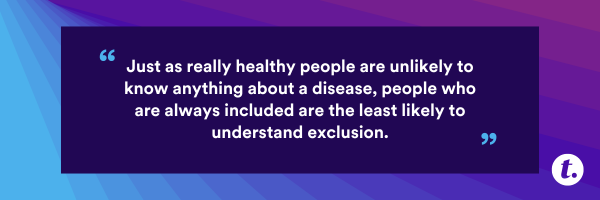
Challenges and Rewards
Transform: What has been the most challenging part of your career as an author focused on HR and/or DEI?
Paolo Gaudiano: I realized early on that it is crucial for me to take a neutral stance, in the sense that my writing has to appeal to two groups that have sometimes diametrically opposite viewpoints. As a white, cis, hetero male, I have to understand and gain the trust of those who have not been as privileged. At the same time, as someone working in DEI, I have to gain the trust of leaders, especially those who share my identity and privilege, who tend to be very skeptical about it all.
Transform: What’s the most rewarding aspect of writing about DEI and workplace trends?
Paolo Gaudiano: The greatest satisfaction I have is when I write something or do a presentation of my work to a mixed audience, and a white male cis hetero executive says how much they loved my presentation and how much sense my ideas make, and then maybe a black, queer line manager also says how much they loved my presentation, how it made them felt “seen,” and how much sense it makes.
Transform: How do you handle periods of writer’s block or when DEI and workplace Culture seems overwhelming?
Paolo Gaudiano: Although I do a ton of writing, it is not my primary job. I find writing to be at the same time relaxing and stimulating. But mostly, I only write about my ideas and opinions – and luckily I am never short of either. Recently because of the sheer amount of work writing my book, my writing for Forbes has dwindled to less than once per month. But to be candid, after about 110 pieces on Forbes in 7 years, I am looking to expand my writing to other platforms.
Publishing and Reception
Transform: Can you describe your journey to getting published in the HR and DEI genre?
Paolo Gaudiano: As a professor, I was a prolific writer, publishing a lot in journals and conference proceedings (interestingly, I still have a decent h-index on Google Scholar, though my academic publishing has been very, very thin in the past decade), though not in HR or DEI. After leaving academia I had occasionally contributed stories to a few magazines. In 2014/15 I was invited to write for a digital advertising magazine (MediaPost).
In 2016, about a year after diving head-first into DEI, I realized that I was onto something, and that I had to start getting the word out, especially to leaders who look like me but who may be skeptical about DEI. I thought that Forbes would be a good outlet because of its focus on leadership. I reached out to someone who had written for Forbes and got an intro to a senior editor. They could tell that I had the ability to write for mass media, and to do so on a consistent basis, and they were intrigued by the idea of a white guy, former professor, entrepreneur, writing about these topics. So they said yes.
Transform: How do you respond to feedback and criticism of your work, especially from HR professionals?
Paolo Gaudiano: I am fortunate that the overwhelming majority of feedback has been positive. But in general my philosophy is that if someone criticizes me, it’s likely that they are right, and if I can understand their viewpoint it will help me to become better (I apply this philosophy in virtually every facet of my life, not just writing). So my tendency is never to challenge criticism, and instead try to engage and understand. I avoid getting dragged into things, and if I see that the other party is just venting rather than trying to achieve something, I tend to back off and let them vent, apologize, and move on.
Transform: What has been the most surprising reaction from readers to your books?
Paolo Gaudiano: When I completed the first draft of Measuring Inclusion, I sent it to five “beta” readers. One of them made some comments that surprised me: she suggested some parts of my book could be potentially interpreted as saying that diversity itself is a bad thing, because of my strong focus on inclusion. Given that she is someone I trust and consider a friend, I took the advice to heart and made sure that whenever I talk about the problems of focusing on diversity, I clearly emphasize the problem of focusing on “diversity alone” or “diversity without inclusion”.
Advice and Future Plans
Transform: What advice would you give to HR professionals or business leaders who aspire to write about their field?
Paolo Gaudiano: I am not sure that I am the best person to give advice, because I have the amazing fortune of being able to write with modest effort, to write about what I love, and to do it when I want to do it. Incidentally, when I met my wife she was a business journalist, so I know what it’s like to be forced to crank out content under pressure – and I am not sure I could do it. (My wife left journalism 5 years ago and is now a financial advisor.)
I might suggest that they should aspire to write only if they feel that they have ideas and a desire to explain those ideas, and use writing as a medium to spread those ideas. I think that aspiring to write because you want to see your name on a byline is dangerous.
On a more practical note, before being invited to write for MediaPost, I was able to get a few stories on a range of topics. I did that by submitting drafts to magazines that I liked. I learned early on that (a) you should not submit writing to a publication unless you actually read the publication and understand the readership; and (b) read the submission instructions and follow them to a tee. If you can get a couple of pieces published this way, it builds your confidence and your portfolio, and it helps you understand how to work with editors. If you strike out several times, then maybe writing is not for you.
Transform: What’s next for you? Are you working on any new projects or books about the future of work?
Paolo Gaudiano: Measuring Inclusion is my first book, and I had completely underestimated the amount of work that goes into a book beyond the actual writing. I am neck-deep in promoting the book, and it will be an extremely busy fall, and I need to restart my Forbes writing.
But writing a book feels a bit like when I ran my first triathlon (the weekend before my 50th birthday): while doing it I f— hated it, but as soon as I got home I started to look for the next one 🤣. There are two more books that I have to write. I already know what they are. One of them I have actually been thinking about for many years – it is about the methodology behind my approach to tackling complex problems in business and society. I have taught a course on these topics at multiple universities, and always wanted to write a book on these ideas. The other is a sequel of Measuring Inclusion, focused on a different aspect.
Transform: How do you envision your writing evolving as workplace trends continue to change?
Paolo Gaudiano: Part of my goal in writing this book was to make it at the same time relevant to current trends, as well as evergreen. Now that the book is ready to launch, I look back and realize some core things I could have done better, which I hope will help me evolve my writing:
- I love the subtitle, “higher profits and happier people, without guesswork or backlash,” but I don’t love the main title “Measuring Inclusion.” It is not catchy enough for someone in my target audience to see the book on someone’s desk or shelf, and want to pick it up and read it.
- As much as I think that I wrote in a much less “academic” style than I have in the past, when I re-read it I can see that there are still some parts that require the reader to do a bit of mental gymnastics. There are some sections and entire chapters that I am proud of, that I think are really smooth and a pleasure to read. But some parts really require the reader to concentrate. I could have shortened the book, removed a few of the details, and probably made it a better book.
My consolation is that the content is so new and so radically different from every other DEI book, that I might get away with it.
My next book is going to be a business bestseller. I have a catchy title (sorry, not ready to let that cat out of the bag) and I will write it so that the average middle-schooler will be able to get it.
Personal Insights
Transform: If you could have dinner with any three thought leaders in HR or business, dead or alive, who would they be and why?
Paolo Gaudiano: Honestly, I have always disliked this kind of question. I find that my favorite conversations have been with people I meet randomly. Having said that, can you introduce me to Melinda French Gates? How about Michelle Obama – does she count as a business leader?
Actually, in the context of HR, a couple of people that I think would be fun to talk to are Zeynep Ton and Peter Cappelli. The latter was a judge for my paper that got second place at this year’s Wharton People Analytics, so technically, I have met him when they interviewed finalists – but I don’t know him well enough to invite him to dinner. I know he has spoken at Transform…
Transform: What book (besides your own) do you wish you had written and why?
Paolo Gaudiano: I have a dislike for Malcolm Gladwell, which, if I were being honest is probably a form of envy because he is so popular. I have read several of his books, and as someone who has a PhD in Cognitive and Neural Systems and decades of work in complexity science, I find that a lot of his thinking is surprisingly shallow and in more than one case, inaccurate. But I wish I could have written Tipping Point. Also, Michael Lewis. Not as thrilled about some of his recent ones, and I haven’t read his latest. But Liars’s Poker, Moneyball, The New New Thing, The Undoing Project, … I’ll take any of those.
Incidentally, The Good Jobs Strategy and Our Least Important Asset are also excellent, and the reason why I mentioned I would like to have dinner with Zeynep Ton and Peter Cappelli.
Transform: How do you unwind and stay grounded when you’re not immersed in writing about the future of work?
Paolo Gaudiano: I love to spend time with my wife. Traveling, going for walks in the neighborhood, binge-watching a stimulating TV series, cooking, eating.
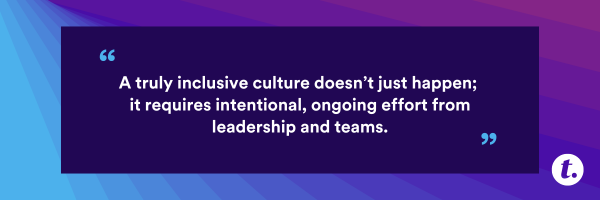
Deep Dive into Specific Works
Transform: What’s the story behind your book, Measuring Inclusion?
Paolo Gaudiano: As mentioned earlier, I jumped into DEI in 2015. I used computer simulations to show certain basic aspects of the link between how companies treat employees and how that, in turn, impacts the company. I built a simulation (kind of like a Sims game) that showed that if a company favors one group (say, men) over another (say, women) in promotions, the result is the kind of gender imbalance that we see in real companies. My colleague, Chibin Zhang, and I have published an academic paper on this. My original goal with Aleria was to use the simulation as the core of an enterprise software platform to support executive decision-making.
One day, a chief diversity officer who had seen the simulation in one of my presentations told me she wanted to pay me to customize the simulation with data from her company. I realized I couldn’t, because it’s not enough to know that someone is, say, an Asian woman with a disability. You need to know how her being an Asian woman with a disability impacts what happens to her at work, day in and day out. So I figured out a way to measure that, and realized that we were effectively measuring inclusion.
Then I also realized that trying to build enterprise DEI software today (or eight years ago) was like trying to build a space station while people were still riding bicycles down on earth. And I also realized that people were starting to get curious about what inclusion meant and how to measure it. So we turned this initial idea into an offering. Along the way we developed an amazing process to collect and analyze inclusion data, but I also understood many, many more things that are wrong in the way people think about DEI – and this is true both of DEI detractors and supporters. It took years to come up with clear explanations, good analogies, and a captivating story. As I started to do more and more public speaking, I also learned to condense, sharpen and simplify the ideas. And finally I realized I was ready to put it all down in a book.
Transform: Can you share an interesting fact or piece of trivia about your research process for Measuring Inclusion?
Paolo Gaudiano: To collect inclusion data, we do workshops in which we introduce a bunch of interesting ideas about DEI, we explain what we mean by inclusion, why it is invisible and how it can be measured, and then we invite them to visit our online, confidential, anonymous platform. There, they enter a bit of demographic data, and then we ask them to write a specific experience of something that happened to them, and to do some simple categorization (this is how we get the mix of quant and qual).
The interesting fact is that the educational part of the workshops is just as important as the data we collect, because it shows people that it’s possible to think about DEI in a way that is radically different, a way that does not rely on guilt or a sense of justice, and that can truly grow the pie for everyone. In fact, in all of our projects, step one is a presentation to the leadership, because I know that they will be really happy and excited, and will help to get the entire company behind the project, and make it more likely they will commit to do some work based on the results.
Transform: How do you choose the case studies or companies to feature in your work, and do any of them hold personal significance?
Paolo Gaudiano: I chose the five examples in the book to show a range of company sizes and industries: from a 50-person startup (who disappointingly refused to let me use their name, even though it is a great case study that makes them look awesome), to global pharma company AstraZeneca.
The last case study in the book is very important to me because it is a collaboration with Women in CyberSecurity (WiCyS), a nonprofit organization that supports—you guessed it—women in cybersecurity. We launched the first-ever industry-wide State of Inclusion Benchmark. Aside from the amazing results, it showed the power of this approach and why it is much better than simply measuring diversity. I see this as the future: establishing inclusion as a standard metric that complements diversity measures. It’s like adding a cashflow statement to the balance sheet.
Engagement with Readers
Transform: How do you interact with your readers, especially those who are HR professionals or DEI leaders?
Paolo Gaudiano: Mostly through conferences and events. Often people reach out to me on social media because they are interested in my work. I am always happy to respond and engage, and this is in large part how my platform has grown, and also how we have gotten most of our clients at Aleria.
Transform: Has feedback from readers ever influenced or changed your perspective on a topic you’ve written about?
Paolo Gaudiano: Yes, I mentioned above the beta book reader who thought that in my passion about inclusion I risked alienating those who believe deeply in diversity. It forced me to be more careful about framing this as an “yes, and” instead of a “but.”
Also I should underscore that when I started in DEI I thought I was passionate and really understood a lot. But I had no clue. I have been extremely fortunate to meet and work with amazing people from less privileged backgrounds, who were patient with me as a “well-meaning progressive white man” and really helped me to realize just how little I understood. I will never know what it truly means to be, say, a Black woman in this country. But by listening to a lot of people who have generously shared their viewpoints with me, I have at least learned to see how much I don’t know, and to be respectful and appreciative of the experiences of others.
Transform: What’s the most memorable interaction you’ve had with a reader regarding your work?
Paolo Gaudiano: Earlier I mentioned a couple of odd situations with my company’s newsletter. Recently I had a weird situation where someone wrote a message in response to one of our newsletters, complaining that the opening sentence of the latest newsletter could be seen as offensive in a certain context. I was surprised because I have known this person for many years, and we have always had a friendly, respectful, and mutually appreciative relationship. And even after re-reading the sentence in question, I had a really hard time seeing what he was seeing.
I tried to take a light-hearted stance, but it triggered a much more aggressive response. I let it sit for a day or so, and then re-read it to look for clues of how I might defuse the situation. It was clear that this person was really stressed out for reasons beyond the content of my newsletter, and that while I thought there was nothing wrong with what I had written, ultimately it wasn’t going to help to argue who was right and who was wrong. So I apologized for adding problems to their already stressful life, and when we posted links to the newsletter on social media, we modified language that addressed the concerns. That resolved the problem, and I am confident that the next time we meet (which we do regularly) there won’t be any awkwardness.
About the reader:
Transform: Describe what a leader/organization looks like one year after reading your book, Measuring Inclusion, and committing to its teachings.
Paolo Gaudiano: If they follow the advice, they will set up a way to measure inclusion (hopefully by hiring Aleria, but the book gives clear explanations of how to do it on their own). They will have done at least one cycle of measurement, have identified the most significant issues, and taken steps to address at least one of them.
They should see less animosity between different demographic groups, less polarization, and overall increased levels of satisfaction, productivity and retention.
Transform: Considering a reader who just finished your book, Measuring Inclusion, and is processing all the great insights, what is the first step they should like to operationalize their learning?
Paolo Gaudiano: They should introduce the ideas to their leadership. Without leadership support, it’s unlikely that they will be able to get started.
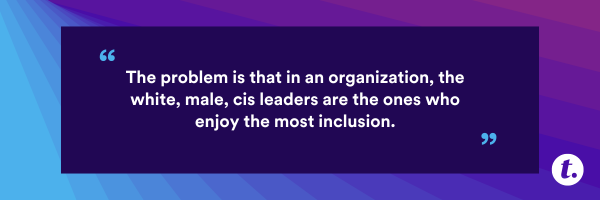
Transform: Share three takeaways from Measuring Inclusion that the reader should walk away with.
Paolo Gaudiano:
- Our obsessive focus on diversity alone is actually one of the main reasons for the current backlash against DEI, and why progress has been so slow. Diversity without inclusion is bound to fail.
- Just as we tend not to notice when we are healthy, but know when we are sick, inclusion itself is invisible, but we can see (and measure) exclusion. One important consequence is that, just as really healthy people are unlikely to know anything about a disease and how to cure it, people who are always included are the least likely to understand exclusion and know how to fix it. But the problem is that in an organization, the white, male, cis leaders are the ones who enjoy the most inclusion. This means that most leaders are the least qualified to see, understand, and know what to do about DEI. The takeaway is that if leaders don’t act it’s usually not because they are evil or want to hang on to their power. It’s because they literally can’t see the problem and don’t know how to fix it.
- People are the most valuable asset and largest budget item of every organization. Any company that can figure out how to diversify their human assets to increase performance will gain an enormous competitive advantage. Just as the ability to measure the impact of advertising on consumers was the main reason why internet companies dominate our economy today, those who learn to measure the impact of human resource initiatives on employees will dominate the economy of the future.
Connect with Paolo directly in the Transform Community! Join now.
